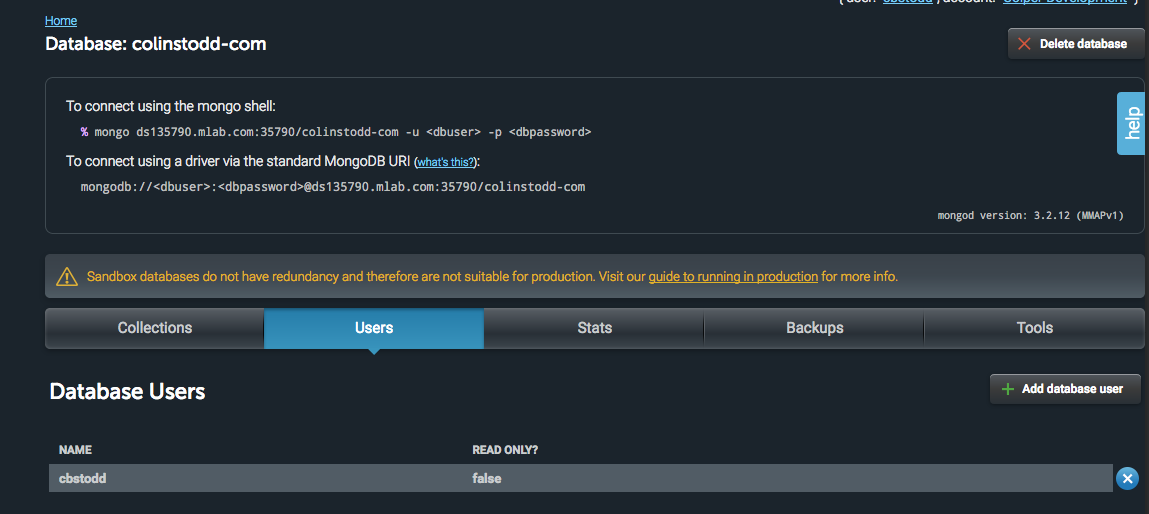 Colin Stodd
Colin Stodd

Adding MongoDB To KeystoneJS
code
Colin Stodd
Angular,Webstorm
01 Mar 2017 (Published)
01 Mar 2017 (Updated)
There isn’t (that I can find) clear instructions on how to connect your mLab (MongoDB) database to your KeystoneJS app. I’m writing this to try and help future on-lookers. It’s stupid simple, but there is one step I feel is missing on the KeystoneJS documentation .
1.You first need to create a database. mLab gives you a free sandbox starter. Sign up for a account. Once you have created the account you need to create a database.
2.Once you create the database, you have to make sure you create a default/admin user in order for it to work. Todo that you need to click on the newly created database, and add user; You can refer to (click on) the image at the top of the page.
3.Once you have created that database and user, you need to click on the database you created and take the string that looks like this, and replace the <dbuser>:<dbpassword> with your username and password. Add this to your .env file, following MONGO_URI= mine looks like this:
MONGO_URI=mongodb://YOUR_USERNAME:YOUR_PASSWORD@ds12345.mlab.com:54321/colinstoddcom
4.Now this is the part that is left out of the documentation. In your keystone.js file you need to add:
'mongo': process.env.MONGO_URI || process.env.MONGOLAB_URI || 'mongodb://localhost/colinstodd',
in your keystone.init. Mine looks something like this:
keystone.init({
'name': 'colinstodd.com',
'brand': 'colinstodd.com',
'sass': 'public',
'static': 'public',
'favicon': 'public/favicon.ico',
'views': 'templates/views',
'mongo': process.env.MONGO_URI || process.env.MONGOLAB_URI || 'mongodb://localhost/colinstodd-com', // ADD HERE
'view engine': '.hbs',
'custom engine': handlebars.create({
layoutsDir: 'templates/views/layouts',
partialsDir: 'templates/views/partials',
defaultLayout: 'default',
helpers: new require('./templates/views/helpers')(),
extname: '.hbs'
}).engine,
'emails': 'templates/emails',
'auto update': true,
'session': true,
'auth': true,
'user model': 'User'
});
The MONGO_URI comes from the variable in your .env file we just updated. This just sets your database for each environment (development and production).
Once you have these added, start your KeystoneJS server and you should be up and running. Let me know if you have any questions.